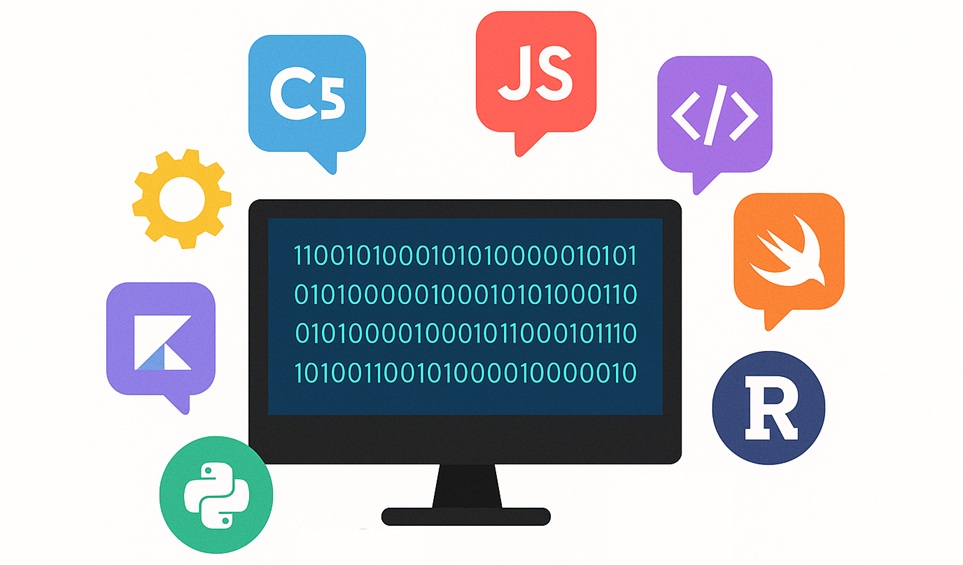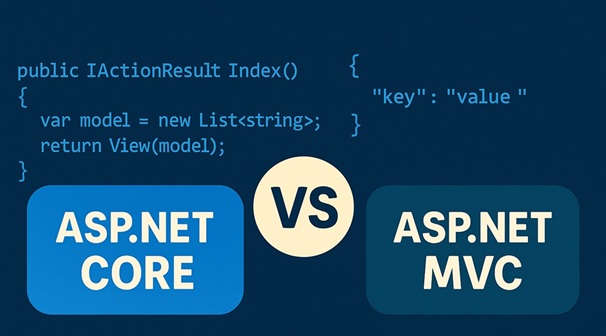Why .NET and AI Finally Belong in the Same Sentence
For a long time, artificial intelligence in software engineering felt almost exclusive to the Python ecosystem. TensorFlow, PyTorch, and scikit-learn defined the tooling, and developers outside that stack were left with limited choices. .NET engineers - despite working inside some of the largest enterprise systems in the world - had to either bolt Python components onto their C# projects or settle for limited ML features.
That has changed. The Microsoft ecosystem has matured into a genuine AI development environment. From ML.NET for classical machine learning to Semantic Kernel for large language model orchestration and ONNX Runtime for cross-framework inference, .NET now offers end-to-end coverage.
For CTOs and engineering leads, this isn’t just about convenience. It means AI can now live natively in enterprise .NET systems without fragile bridges. Developers can integrate predictive intelligence, natural language interfaces, and computer vision directly into the applications companies already rely on - with security, governance, and maintainability intact.
This article explores the most important AI tools for .NET developers in 2025. Instead of just listing names, we’ll explain what they do, when to use them, and where they fit in real-world projects.
1. ML.NET: Classical Machine Learning in the .NET World
ML.NET is Microsoft’s in-house machine learning framework tailored for developers who already work in C# or F#. It provides APIs for classification, regression, anomaly detection, clustering, recommendation engines, and even time series forecasting.
Traditionally, if a .NET team wanted to build a churn model or forecast demand, they would either hand off data science tasks to a Python team or rely on external SaaS AI APIs. With ML.NET, teams can train and deploy models without leaving the .NET environment. This reduces friction, ensures type safety, and leverages existing developer skills.
Real-world scenarios:
- A logistics platform predicting shipment delays based on weather and traffic history.
- A financial dashboard scoring loan applications for default risk.
- An eCommerce site recommending products based on user activity.
Limitations:
ML.NET shines for structured data and traditional ML tasks. For deep learning, computer vision, or LLM-related work, other tools in the ecosystem are stronger. That’s why ML.NET often works best as the first step in adding intelligence to enterprise apps.
2. Semantic Kernel (SK): Orchestrating Large Language Models
Semantic Kernel is Microsoft’s orchestration framework for building AI agents around large language models (LLMs) like GPT-4. It provides abstractions such as skills (functions), planners (task orchestration), and memory (contextual persistence), which allow developers to chain prompts and create applications that don’t just answer - they reason and act.
The hardest part of working with LLMs isn’t calling an API. It’s managing context, chaining tasks, and blending model outputs with real business data. SK solves that orchestration challenge, giving .NET developers a structured way to build assistants that integrate naturally into enterprise workflows.
Scenarios:
- A CRM system where a sales assistant suggests next actions based on historical email threads.
- A knowledge management portal that answers employee queries using internal documentation and policies.
- A logistics dashboard that generates optimized shipping plans by combining conversation history with real-time data.
Limitations:
SK is still a young project, and while it integrates tightly with Microsoft’s ecosystem, it requires teams to think in terms of orchestration patterns - not just raw model calls. This adds complexity but also unlocks long-term scalability.
3. Azure OpenAI .NET SDK: Enterprise-Grade Access to LLMs
Azure’s OpenAI service brings GPT-4, Codex, and embedding models into enterprise environments, wrapped in Microsoft’s compliance, security, and billing framework. The .NET SDK provides a strongly-typed client for integrating these models directly into C# applications.
Many enterprises can’t (or won’t) use public APIs for sensitive data. With Azure OpenAI, companies gain SOC, GDPR, HIPAA, and regional compliance, plus usage tracking and Azure AD authentication. For .NET shops already inside Azure, this is the safest path to adopt LLMs.
Scenarios:
- Automated summarization of legal contracts inside a document management platform.
- Conversational customer service agents deployed in regulated industries like finance or healthcare.
- Intelligent search experiences for enterprise knowledge bases, using embeddings.
Comparison to SK:
Semantic Kernel provides orchestration. Azure OpenAI SDK provides secure access. In practice, many teams use them together - SK as the “brain” and Azure OpenAI as the “language.”
4. Azure Cognitive Services: Plug-and-Play AI Features
Cognitive Services are Microsoft’s pre-trained AI APIs available via .NET SDKs. They cover computer vision, speech recognition, natural language processing, anomaly detection, and more.
Not every business wants to train its own model. For many tasks - scanning invoices, detecting faces, analyzing sentiment - pre-trained APIs are faster and cheaper. Cognitive Services let developers add intelligence in days, not months.
Scenarios:
- Automatically extracting invoice data into an ERP system.
- Transcribing multilingual customer support calls.
- Analyzing sentiment in customer feedback at scale.
- Detecting anomalies in IoT sensor data from a manufacturing line.
Limitations:
These APIs are easy to use but less customizable. Once your requirements go beyond what Microsoft provides, you may need ML.NET or ONNX Runtime.
5. ONNX Runtime: Run AI Models Anywhere in .NET
ONNX (Open Neural Network Exchange) is a format for representing trained deep learning models. ONNX Runtime is Microsoft’s high-performance inference engine that runs models trained in frameworks like TensorFlow or PyTorch inside .NET.
Why it matters:
Most enterprise AI teams still train models in Python, but the business apps that consume them often live in .NET. ONNX Runtime bridges that gap: train anywhere, deploy everywhere.
Real-world scenarios:
- Running a pre-trained fraud detection model inside a C# banking application.
- Deploying a PyTorch vision model to an ASP.NET web API for real-time inference.
- Running speech recognition models on edge devices that use .NET for system control.
Comparison to ML.NET:
ML.NET is about training inside .NET. ONNX Runtime is about deployment inside .NET. Together, they cover the full lifecycle: training pipelines + production inference.
Quick Reference Table: Picking the Right Tool
|
Scenario |
Best Choice |
|
Predicting structured business outcomes (sales, churn, demand) |
ML.NET |
|
Building AI-powered assistants with memory and planning |
Semantic Kernel |
|
Securely integrating GPT-4/LLMs under compliance rules |
Azure OpenAI .NET SDK |
|
Adding vision/speech/translation with minimal setup |
Azure Cognitive Services |
|
Running pre-trained deep learning models in .NET apps |
ONNX Runtime |
6. TorchSharp: PyTorch for Hardcore .NET Developers
TorchSharp is essentially a C# wrapper around the PyTorch runtime (libtorch). Unlike ML.NET, which abstracts away much of the complexity, TorchSharp gives developers nearly full control of tensors, gradients, and training loops - but in .NET syntax.
For teams already experimenting with PyTorch models but unwilling to leave the Microsoft stack, TorchSharp provides a bridge. It allows low-level experimentation, custom neural network design, and even on-device training in C#.
Where it shines:
- Edge computing scenarios where native Windows apps need embedded ML.
- Specialized research projects inside enterprises that want .NET-native workflows.
- Advanced teams that need fine-grained control over network architecture and optimization routines.
Caution: TorchSharp is not beginner-friendly. It requires familiarity with deep learning concepts and often benefits from collaboration with data scientists. But when control is non-negotiable, TorchSharp delivers.
7. Infer.NET: The Legacy of Probabilistic Programming
Infer.NET, originally developed by Microsoft Research, is a framework for Bayesian inference and probabilistic modeling. While no longer actively developed, it remains a unique tool for modeling uncertainty - something classical ML libraries rarely address directly.
Not every problem is about deterministic predictions. In finance, medical research, or risk modeling, it’s often more valuable to understand the probability distribution of outcomes rather than a single point estimate. Infer.NET specializes in those cases.
Example use cases:
- Risk analysis in insurance portfolios.
- Patient outcome predictions with uncertainty ranges in healthcare.
- Fraud detection systems that highlight probability rather than binary decisions.
Though less mainstream, Infer.NET demonstrates Microsoft’s early investment in probabilistic AI - and it’s still relevant when modeling uncertainty is critical.
8. NuGet Ecosystem and Specialized Microframeworks
Beyond Microsoft’s official libraries, the NuGet ecosystem has become a fertile ground for AI-focused packages. These smaller frameworks extend the stack into niche areas:
- Microsoft.ML.Recommender – A focused package for recommendation engines. Useful for eCommerce personalization or media platforms.
- Microsoft.ML.ImageAnalytics – Pipelines for vision tasks like image classification or feature extraction.
- LangChain.NET – A .NET reimagination of the popular LangChain framework, helping chain LLM tasks into workflows.
- ChatGPT.NET – A community-built wrapper for OpenAI APIs, useful for quick prototyping.
- Dapr + AI – Leveraging Dapr sidecars to deploy distributed AI logic in microservices architectures.
These microframeworks save time. Instead of reinventing the wheel, developers can plug in specialized modules and focus on integration. For startups or teams experimenting with AI features, NuGet often accelerates time-to-market.
9. Developer Tooling: Making AI Development Practical
The Microsoft ecosystem has invested not just in libraries but also in developer experience. For .NET teams new to AI, these tools reduce friction and shorten the learning curve.
- Visual Studio IntelliCode: AI-powered code completions based on patterns from thousands of open-source projects. Speeds up adoption of AI libraries by suggesting best practices.
- Azure AI Studio: A platform for prompt engineering, evaluation, and monitoring of LLM workflows. Critical for moving from “it works on my laptop” to production-grade AI.
- Prompt Flow (coming to .NET): A visual orchestration tool that allows developers to design, test, and optimize prompt workflows without hardcoding everything.
These tools align with the Microsoft philosophy: bring AI into the environments where enterprise developers already live - Visual Studio, Azure DevOps, and .NET runtimes.
10. Choosing the Right Stack for Real Scenarios
It’s easy to get lost in acronyms and library names. What really matters is mapping business needs to the right .NET AI stack. Below are practical scenarios with recommended tools:
|
Business Scenario |
.NET AI Tooling |
|
Invoice OCR + database matching |
Azure Cognitive Services (Vision API) + ML.NET for anomaly detection |
|
Customer support chatbot inside admin dashboard |
Semantic Kernel + Azure OpenAI SDK |
|
Deploying a pre-trained PyTorch fraud model in banking |
ONNX Runtime |
|
Building a recommendation engine for eCommerce |
ML.NET + Microsoft.ML.Recommender |
|
Predictive maintenance with IoT devices |
TorchSharp (for custom models) + ONNX Runtime for deployment |
|
Enterprise CRM with AI assistants |
Azure OpenAI SDK + Semantic Kernel Planner |
This mapping helps teams avoid over-engineering. Not every task needs a custom neural net - sometimes a pre-trained API is the smarter choice.
11. Industry Applications: Where .NET AI Really Matters
AI in .NET isn’t just a technical milestone - it’s a business enabler. Here’s how different sectors benefit:
- Healthcare: Patient triage bots, medical image analysis, and predictive hospital resource allocation. .NET’s HIPAA-ready environment makes it suitable for regulated industries.
- Logistics: Demand forecasting, real-time fleet optimization, OCR for customs paperwork, and predictive maintenance on trucks or aircraft.
- Finance: Fraud detection, risk scoring, customer service chatbots that integrate securely with banking CRMs.
- Retail & eCommerce: Personalization engines, intelligent search, automated inventory predictions.
- Manufacturing: IoT-driven predictive maintenance, supply chain optimization, and quality inspection through vision AI.
In each of these sectors, the value of .NET AI isn’t just the library. It’s the fact that AI can live inside the enterprise systems already built in ASP.NET, Blazor, or WPF - without brittle cross-language integrations.
12. The Maturity of .NET in AI (and What’s Next)
Five years ago, .NET developers experimenting with AI often felt like second-class citizens in the Python-dominated ecosystem. Today, that’s no longer true. The stack now supports:
- Classical ML (ML.NET).
- Deep learning inference (ONNX Runtime).
- Low-level experimentation (TorchSharp).
- LLM orchestration (Semantic Kernel).
- Secure enterprise-grade language integration (Azure OpenAI SDK).
- Plug-and-play APIs (Azure Cognitive Services).
- Specialized extensions (NuGet ecosystem).
And more importantly: it all integrates with Visual Studio, Azure DevOps, and enterprise governance frameworks.
Looking ahead, Microsoft is investing in hybrid AI (cloud + edge), better developer tooling for LLMs, and AI observability (monitoring drift, bias, and performance). The roadmap suggests .NET AI won’t just be catching up - it will be leading in areas where enterprise integration, compliance, and scalability matter most.
Why TwinCore Leads in .NET AI Development
The old idea that “AI belongs only to Python” doesn’t hold anymore. In 2025, the .NET ecosystem has grown into a full AI powerhouse - from ML.NET for predictive analytics to Semantic Kernel for orchestrating large language models, and from ONNX Runtime for deep learning deployment to Azure Cognitive Services for instant, production-ready features.
At TwinCore, we’ve spent over 15 years building solutions on .NET that are not only scalable but also business-critical. We integrate AI tools into systems: demand forecasting for logistics, intelligent chatbots for finance, recommendation engines for eCommerce, and secure data pipelines for healthcare. Our strength lies in combining Microsoft .NET, Azure, database design, and distributed systems expertise with a deep understanding of business needs.
When you work with TwinCore, you’re not just choosing frameworks or libraries - you’re choosing an engineering team that knows how to turn them into infrastructure that delivers results. We don’t build proofs of concept that stay on the shelf. We build software that runs in production, meets compliance requirements, and generates measurable ROI.
The future of AI in .NET is already here - and with TwinCore, you can make it part of your business today.

 LinkedIn
LinkedIn
 Twitter
Twitter
 Facebook
Facebook
 Youtube
Youtube







